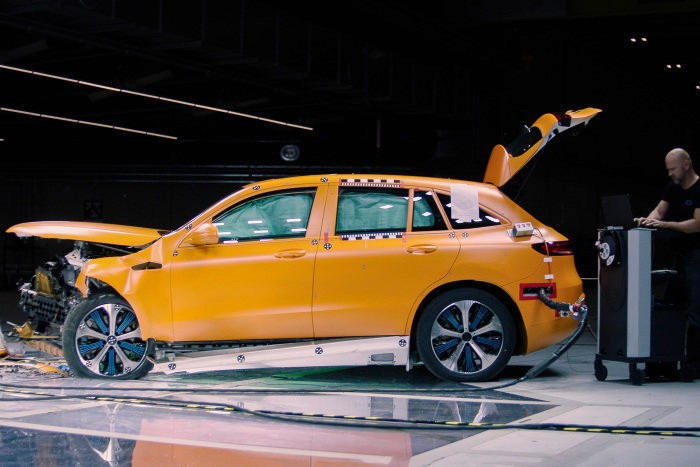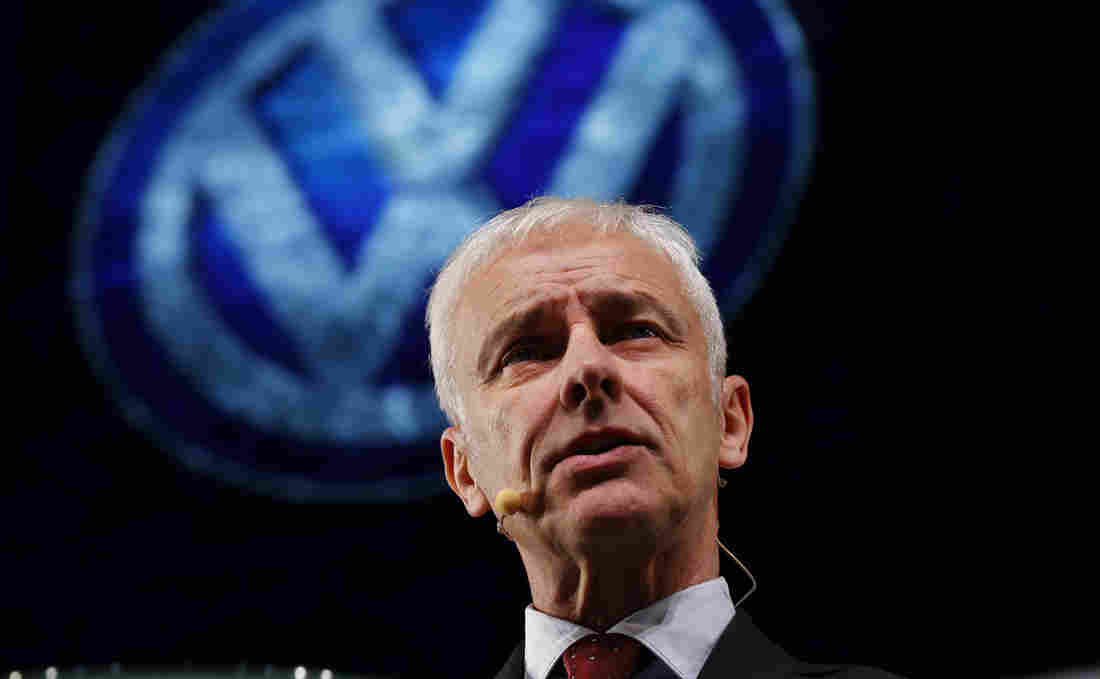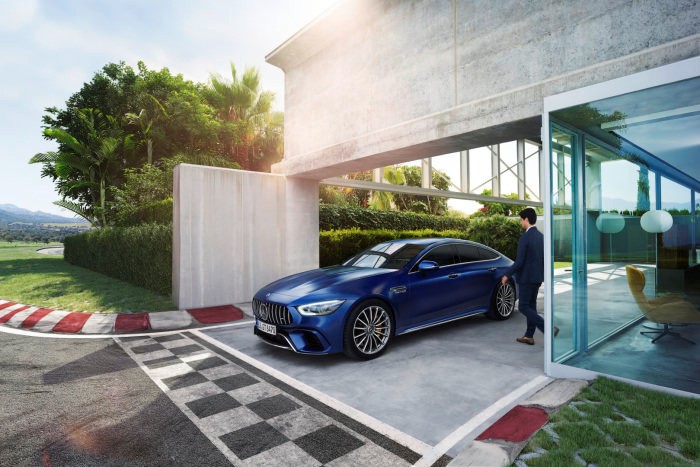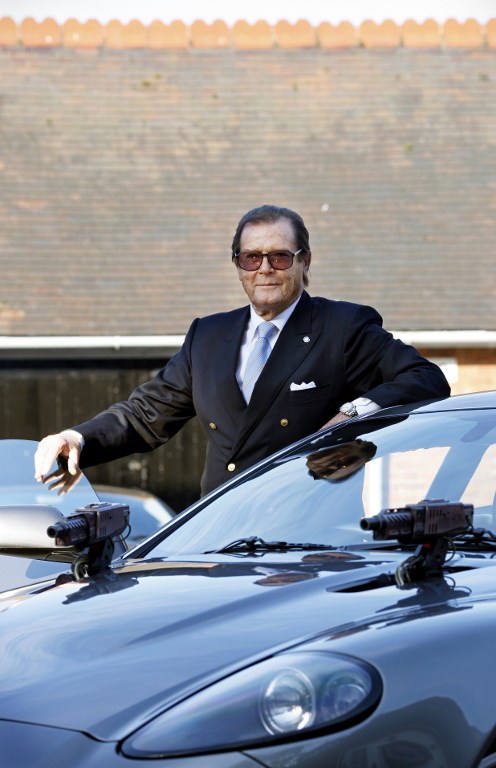11.
December 2018
Stuttgart
combined power consumption: 22.2 kWh/100 km; combined CO2 emissions: 0 g/km, provisional figures [1]Stuttgart. The new Mercedes-Benz EQC (combined power consumption: 22.2 kWh/100 km; combined CO2 emissions: 0 g/km, provisional figures)[1] is also a genuine Mercedes when it comes to passive safety. In addition to the usual, extensive programme of crash tests, the brand applies stringent safety standards to the battery and all component parts carrying electrical current. In many cases these standards exceed legal requirements.
Mercedes-Benz's extensive experience of high-voltage drive systems has led to a special safety concept. The EQC's accident safety was validated at the Mercedes-Benz technology centre for vehicle safety (TFS), the most advanced crash test centre in the world. Here vehicles, including prototypes with large electric batteries, have been tested under harsh crash conditions. The result is a whole array of constructive measures which deliver the EQC's high level of crash safety:
A new subframe surrounds the drive components located in the front section, and this unit is supported by the usual mounting points. The battery is surrounded by a robust frame with an integral crash structure. Deformation elements are installed between the frame and the battery, and these are able to absorb additional forces in the event of a severe side impact. A battery guard in the front area of the battery is able to prevent the energy storage unit from being pierced by foreign objects. The high-voltage system can also be shut down automatically in a crash, depending on its severity. A distinction is made between a reversible and an irreversible cut-off. When it is shut down the voltage in the high-voltage system outside of the battery reduces to below the safety-relevant voltage limit in a very short time. Another feature of the comprehensive high-voltage safety concept is that the charging process is automatically curtailed if an impact is detected when stationary at a quick-charging station (DC charging). There are also shutdown points where emergency teams can deactivate the high-voltage system manually. In addition to assessing the occupant values during a crash, the battery's accident safety was also tested at the development centre of Deutsche ACCUMOTIVE, a wholly-owned Daimler subsidiary. Test criteria included the battery's behaviour under impact and when penetrated by foreign bodies, with overheating and overloading also simulated. Beyond the structural safety and the battery protection concept, the model's specially adapted restraint systems are particularly important for the occupants in the event of an accident.
Three-point seat belts with pyrotechnical belt tensioners and belt force limiters are installed for the driver, front passenger and passengers on the outer rear seats (normal three-point seat belt in the centre at the rear). i-Size (Europe) and ISOFIX (other countries) child seat attachment points for securely attaching appropriate child seats on the outer rear seats Window airbags in the roof area between the A, B and C-pillars for the head area of the driver, front passenger and passengers on the outer rear seats Combined thorax/pelvis side impact airbags for driver and front passenger. Additional optional side impact airbags for the outer rear seats. Airbags for driver and front passenger in the event of a severe frontal impact, with dual-stage, time-delayed deployment on the passenger side Knee airbag for the driver Numerous measures help to ensure that when Mercedes-Benz vehicles suffer an accident, consequential damage is reduced and rescue of the occupants is assisted. As soon as a protective system (e.g. belt tensioner and airbag) is triggered, an emergency call or a service call is made or a breakdown is detected, the following measures can be initiated depending on the accident type and severity:
Automatic activation of Mercedes-Benz emergency call to notify emergency services of the location and emergency situation and initiate rescue. Shutdown of the high-voltage system Activation of the hazard warning system to warn other road users Interior lighting switched on Front side windows lowered for ventilation in the event of airbag deployment Central locking system unlocked Lifting of the electrically adjustable steering column Notification of a detected breakdown or accident situation to Car-to-X communication and to the Mercedes-Benz service centre A rescue sticker provides a direct link to the vehicle's rescue data sheet. Corresponding stickers are affixed to the charging flap and to the opposite B-pillar of the vehicle for this purpose. In the aftermath of an accident, rescue services can scan the QR code with a smartphone or tablet PC for fast and reliable access to the rescue data sheet for the specific vehicle concerned, thus facilitating rescue operations. Alongside the rescue data sheets, the Rescue Assist App for smartphones and tablets also has three-dimensional views of the vehicle – now also offline in case there is no mobile network available at the accident scene. Video impressions from the EQC's crash testing can be found here.
[1] Figures for power consumption and CO2 emissions are provisional and were determined by the Technical Service. The range figures are also provisional. EC type approval and a certificate of conformity with official figures are not yet available. Differences between the stated figures and the official figures are possible.
Press Contact
Sarah Widmann
Intelligent Drive & Passive Safety
sarah.widmann@daimler.com
Tel: +49 711 17-97729
Fax: +49 711 17-79094388
Wolfgang Würth
Manager Communications EQ
wolfgang.wuerth@daimler.com
Tel: +49 711 17-46508
Fax: +49 711 17-79016071
Koert Groeneveld
Head of International Product & Technology Communications
koert.groeneveld@daimler.com
Tel: +49 711 17-92311
Fax: +49 711 17-94365
Press Contact Overview
Media
Download
Pictures (14)
Videos (2)
Documents (1)
Media Contact (3)
Filter
Show thumbnails
Show list
Slideshow
Zoom
Preview
Details
Do you really want to delete the data record?
Please wait a moment …
Please wait a moment …
Please wait a moment …
Please wait a moment …
18C1051_001
18C1051_003
18C1051_002
18C1051_004
18C1051_005
18C1051_006
18C1051_007
18C1051_008
18C1051_009
18C1051_010
18C1051_013
18C1051_011
18C1051_012
18C1051_014
Loading




